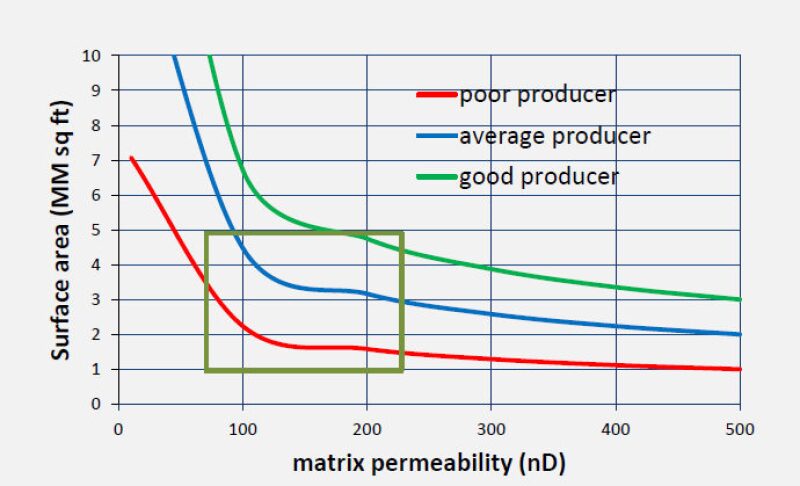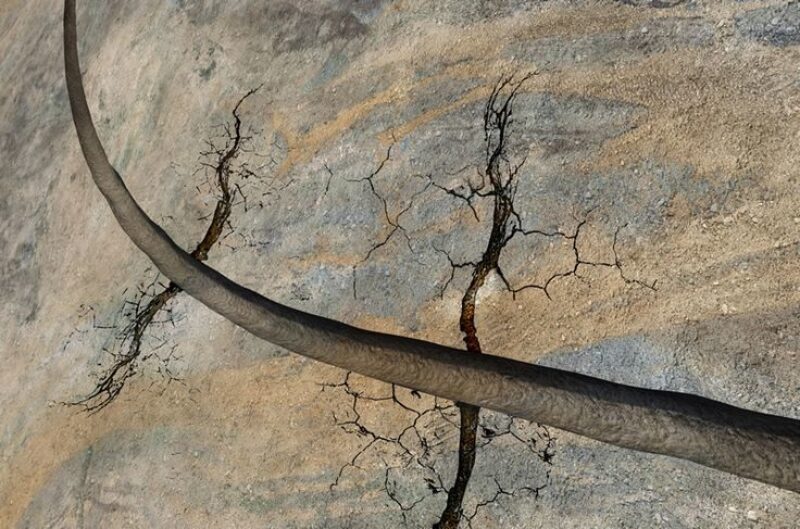Natural fractures are widely and intuitively believed to enhance the productivity of shale gas reservoirs significantly. Speaking to the SPE Gulf Coast Section Westside Group in Houston, SPE Distinguished Lecturer Ian Walton presented findings from his use of a semi-analytic shale gas production model, which shows that natural fractures add little to reservoir productivity. Their presence may actually be detrimental, he argued, because they are prone to fluid leakoff that limits outward extension growth of the main hydraulic fractures.
Walton, a senior research scientist in the Energy and Geoscience Institute at the University of Utah and adjunct professor of chemical engineering at the university, has more than 25 years’ industry experience, most recently as a scientific adviser at Schlumberger, and has more than 15 years’ teaching experience. He holds a PhD in applied mathematics from the University of Manchester.
“The most intuitive thought is because the matrix permeability is so small, we’re never going to produce gas economically unless there is a huge network of natural fractures out there for the gas to flow in,” Walton said. “And that’s one of the things I want to challenge.”
CBM, Shale Gas Reservoirs Differ
Before shale gas production became viable, the oil and gas industry began to produce significant amounts of coalbed methane (CBM)—a process that is highly dependent on natural fracture networks.
Walton noted the differences between CBM and shale gas reservoirs. Natural fractures in CBM reservoirs are typically open, often filled with water, and hold adsorbed gas on the rock matrix. When wells are put on line, the fractures become dewatered and gas production follows.
In shale gas reservoirs, natural fractures most often are closed and filled with mineral calcite, generally not water. Pressurized fracturing fluid may open them. But adsorbed matrix gas, if present, cannot be liberated without water. Pore gas, if present, could be produced at some level as long as the fractures, which are not propped, remain partially open when the fracturing fluid is withdrawn.
Productive Fracture Surface Area
Walton focused on the question of how much productive fracture surface area is created in a hydraulic fracturing treatment of reservoir rock with an extensive network of natural fractures, having various orientations, using as an example a treatment that establishes 15 transverse, propped hydraulic fractures 200 ft high and 500 ft across.
Based on mass balance calculations, the amount of proppant pumped creates a fracture surface area of 2 million ft2 to 3 million ft2 in the transverse fractures, and the amount of fracturing fluid pumped creates a fracture surface area of approximately 100 million ft2, which includes the transverse fractures and the natural fractures that the fluid opens. How much of the fracture surface area would be productive?
To look for the answer, Walton used a semi-analytic method in which he applied a dual-porosity/dual-permeability reservoir model to analyze shale gas well production data from rock with multiple fractures.
The model’s theory suggests that for a substantial period of time cumulative production can be approximated by multiplying a production coefficient by the square root of the (elapsed) time that the well has been in production, where the coefficient depends on a set of reservoir property measurements (pressures, reservoir quality, and gas properties) and the productive fracture surface area.
The model can also be used, by applying a variation of the equation, to approximate the well production rate. Walton presented an analysis that used the cumulative production equation.
Barnett Shale Wells Analyzed
Analyzing thousands of north-Texas Barnett Shale wells, for which the cumulative production was known, Walton determined their production coefficients by dividing the square root of elapsed time into cumulative production. He then developed a probability distribution for these values, from which he characterized poor producers, average producers, and good producers.
Taking the production coefficient calculation formula, for which he had the relevant reservoir property data and now had the coefficient, Walton inverted the formula (worked backward) to solve for the productive fracture surface area. He plotted separate curves for the poor producers, average producers, and good producers. The productive fracture surface areas for the well groups ranged from approximately 1 million ft2 to 5 million ft2.
“The important thing is it’s a few million square feet,” Walton said. “It’s not a hundred million square feet. That’s a big difference. It’s commensurate with the size of the transverse fracs—the propped fracs—and not the others.”
In examining the production data, Walton was able to infer that no fracture-fracture interference took place for at least 5 years and that the productive fractures were therefore at least 100 ft apart. Had the reopened natural fractures been producing, he said, not only would the production have been much higher but fracture-fracture interference would have become evident sooner, given the closer spacing between productive fractures.

Low Recovery of Fracturing Fluid
Walton also noted the low recovery of fracturing fluid in natural fractures during fluid flowback. “Some of the fluid in [the fracture] will be squeezed back, the rest imbibed,” he said. The imbibed fluid will remain in the matrix and can form a barrier to future production. He suggested that the industry consider changing the composition of fracturing fluid to make it more viscous, which would keep more of it in the main fractures and allow less of it to enter the narrower ones.
In his conclusion, Walton said that natural fracture networks play “only a small part” in shale gas production and “may not be productive unless we do something about it—unless we can either clean them up better or we prevent the fluid going down there.”

